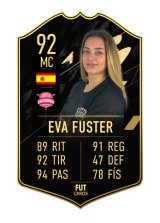Building upon the insights from The Science of Colors and Their Role in Modern Towns, we explore how the psychological effects of color extend beyond aesthetics to influence social dynamics within urban environments. As cities evolve, thoughtful integration of color psychology plays a crucial role in fostering vibrant, inclusive, and safe community spaces. This article aims to deepen understanding of how colors actively shape interactions, perceptions, and well-being in our shared urban landscapes.
Contents
- The Psychological Impact of Color in Public Spaces
- Cultural Perceptions of Color and Their Influence on Urban Design
- Color and Social Cohesion: Facilitating Interaction and Inclusion
- The Role of Color in Urban Safety and Navigation
- Beyond Aesthetics: The Functional Psychology of Color in Urban Infrastructure
- Emerging Trends: Adaptive and Dynamic Use of Color in Community Spaces
- Connecting Back to the Parent Theme: The Broader Role of Color Science in Town Development
The Psychological Impact of Color in Public Spaces
Colors in urban environments are more than mere visual elements; they evoke emotional responses that influence behavior and mental states. For example, blue hues are often associated with calmness and serenity, making them effective in reducing stress in busy city parks and plazas. Conversely, red tones can stimulate energy and excitement, which can be harnessed to invigorate community gathering spots.
Research indicates that specific colors can impact physiological responses: a study published in the Journal of Environmental Psychology found that green environments with lush foliage and appropriately colored features promote relaxation and improve overall well-being among urban residents.
| Color | Emotional Response | Urban Application |
|---|---|---|
| Blue | Calm, Trust | Public seating, water features |
| Red | Excitement, Alertness | Playgrounds, event zones |
| Green | Relaxation, Balance | Parks, pedestrian pathways |
Cultural Perceptions of Color and Their Influence on Urban Design
Color symbolism varies significantly across cultures, affecting how urban spaces are perceived and accepted. In Western societies, white often symbolizes purity and peace, making it popular for community centers and hospital facades. In contrast, in many Asian cultures, red signifies prosperity and good fortune, leading to its prominent use in festivals and public decorations.
For instance, a public plaza decorated with red banners and furniture may be perceived as lively and welcoming in one cultural context, but overly aggressive or inappropriately festive in another. Recognizing these differences is essential for urban planners aiming for culturally sensitive designs.
“Integrating cultural perceptions of color into urban design fosters inclusivity and enhances community acceptance.”
Color and Social Cohesion: Facilitating Interaction and Inclusion
Color schemes can be strategic tools to define social zones within urban spaces, encouraging interaction across diverse groups. For example, using warm colors like orange and yellow in communal areas can create inviting environments that stimulate conversation and social bonding.
Inclusion is further promoted through thoughtful color choices that reduce perceived social barriers. Bright, accessible colors in playgrounds or senior centers can signal openness and friendliness, making these spaces more welcoming to all age groups and backgrounds.
Community initiatives have successfully employed vibrant murals and color-coded zones to reinforce neighborhood identity and foster local pride, illustrating how color can serve as a unifying element.
The Role of Color in Urban Safety and Navigation
Effective color coding enhances wayfinding, especially in complex urban environments like transit hubs and large parks. Bright, high-contrast colors are used in signage to improve visibility and guide pedestrians intuitively.
Psychologically, high-visibility colors such as yellow and orange increase safety perceptions by signaling caution or alertness. For example, traffic cones, safety vests, and directional markers often employ these hues to draw attention and reduce accidents.
Innovative urban safety measures include dynamic lighting systems that change color based on the time of day or weather conditions, providing real-time cues for pedestrians and drivers alike.
Beyond Aesthetics: The Functional Psychology of Color in Urban Infrastructure
Colors embedded in transportation systems, signage, and urban furniture influence behavior subconsciously. For instance, red on stop signs commands attention, reducing response time for drivers, while blue in public transit stations can promote calm and reduce stress during commutes.
Designing these elements with psychological principles in mind enhances functionality. An example is the use of green on pedestrian crossings, which not only signals permission but also subconsciously encourages safe crossing behavior.
Urban furniture, such as benches and bike racks, can be colored to subtly guide usage patterns, maximizing space efficiency and safety while fostering a comfortable environment.
Emerging Trends: Adaptive and Dynamic Use of Color in Community Spaces
Advancements in technology enable the deployment of smart lighting systems and interactive color displays that respond to community needs and environmental conditions. For example, dynamic lighting can change hues during festivals or to commemorate local events, fostering a sense of community participation.
Adaptive color schemes respond to weather, time, or foot traffic, creating responsive environments that enhance user experience. An illustration is a plaza that shifts from cool blues during hot days to warm oranges in the evening, promoting comfort and social activity.
Future developments may include augmented reality applications that overlay information and aesthetic effects through mobile devices, further integrating color psychology into urban interaction.
Connecting Back to the Parent Theme: The Broader Role of Color Science in Town Development
Understanding the psychological impacts of color complements traditional urban planning by adding a layer of human-centered design. Integrating color science into community development fosters spaces that are not only functional but also emotionally nourishing.
Interdisciplinary approaches—combining urban design, psychology, and cultural studies—are essential for creating inclusive and resilient towns. For instance, research on color perception can inform the placement of social zones, safety features, and cultural symbols, ensuring that urban environments resonate with diverse populations.
“Mastering the science of color in urban spaces unlocks new potentials for community cohesion, safety, and well-being—ultimately enriching the fabric of our towns.”
In conclusion, a deeper grasp of color psychology enriches the science of urban development, transforming cities into more humane, engaging, and adaptive environments. As we continue to innovate, integrating these insights will be vital for shaping the towns of tomorrow.

